4-Hydroxy-3-nitrobenzaldehyde
- CAS NO.:3011-34-5
- Empirical Formula: C7H5NO4
- Molecular Weight: 167.12
- MDL number: MFCD00007117
- EINECS: 221-141-6
- SAFETY DATA SHEET (SDS)
- Update Date: 2025-07-04 15:08:51
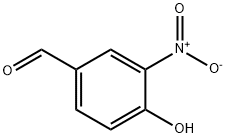
What is 4-Hydroxy-3-nitrobenzaldehyde?
Chemical properties
yellow-brown to brown powder
The Uses of 4-Hydroxy-3-nitrobenzaldehyde
4-Hydroxy-3-nitrobenzaldehyde is an Intermediate used in synthesis of novel amodiaquine analogs as potential antimalarial and antifilarial compounds.
The Uses of 4-Hydroxy-3-nitrobenzaldehyde
4-Hydroxy-3-nitrobenzaldehyde was used in the synthesis of:
- 4-hydroxy-3-nitrocinnamic acid
- solvated benzohydrazone derivatives: N′-(4-hydroxy-3-nitrobenzylidene)-3-methylbenzohydrazide-methanol-water
General Description
4-Hydroxy-3-nitrobenzaldehyde reacts with 3-bromo-benzohydrazide in methanol to yield (E)-3-bromo-N′-(4-hydroxy-3-nitrobenzylidene)benzohydrazide.
Properties of 4-Hydroxy-3-nitrobenzaldehyde
| Melting point: | 140-142 °C (lit.) |
| Boiling point: | 295.67°C (rough estimate) |
| Density | 1.5216 (rough estimate) |
| refractive index | 1.6280 (estimate) |
| storage temp. | Keep in dark place,Sealed in dry,Room Temperature |
| solubility | DMSO (Slightly), Methanol (Slightly) |
| form | Powder |
| pka | 4.99±0.14(Predicted) |
| color | light yellow |
| Sensitive | Air Sensitive |
| BRN | 2047884 |
| CAS DataBase Reference | 3011-34-5(CAS DataBase Reference) |
| NIST Chemistry Reference | 4-Hydroxy-3-nitrobenzaldehyde(3011-34-5) |
Safety information for 4-Hydroxy-3-nitrobenzaldehyde
| Signal word | Warning |
| Pictogram(s) |
 Exclamation Mark Irritant GHS07 |
| GHS Hazard Statements |
H315:Skin corrosion/irritation H319:Serious eye damage/eye irritation H335:Specific target organ toxicity, single exposure;Respiratory tract irritation |
| Precautionary Statement Codes |
P261:Avoid breathing dust/fume/gas/mist/vapours/spray. P264:Wash hands thoroughly after handling. P264:Wash skin thouroughly after handling. P280:Wear protective gloves/protective clothing/eye protection/face protection. P304+P340:IF INHALED: Remove victim to fresh air and Keep at rest in a position comfortable for breathing. P305+P351+P338:IF IN EYES: Rinse cautiously with water for several minutes. Remove contact lenses, if present and easy to do. Continuerinsing. P405:Store locked up. |
Computed Descriptors for 4-Hydroxy-3-nitrobenzaldehyde
4-Hydroxy-3-nitrobenzaldehyde manufacturer
SAKEM LLP
1Y
Phone:+91-9676889998
Whatsapp: +91-9676889998
product: 3011-34-5 4-Hydroxy-3-nitrobenzaldehyde 98%
New Products
Indole Methyl Resin tert-butyl 9-methoxy-3-azaspiro[5.5]undecane-3-carboxylate Boc-His(Boc)-OH 2-CTC Resin 4-Chloro-7-tosy1-7Hpyrrolo[2,3-d]pyrimidine 5,7-Dibromo-1H-indole 2,5-dichloro-N-hydroxy-4,6-dimethylpyridine-3-carboximidamide 2,2-Dimethoxy-7-azaspiro[3.5]nonane hydrochloride 4-chloromethyl-5-methyl-1,3-dioxol-2-one (DMDO-Cl) R-2-BENZYLOXY PROPIONIC ACID 1,1’-CARBONYLDIIMIDAZOLE 1,1’-CARBONYLDI (1,2-4 TRIAZOLE) N-METHYL INDAZOLE-3-CARBOXYLIC ACID 4-((2-hydroxyethyl)thio)benzoic acid 1-(TERT-BUTOXYCARBONYL)-2-PYRROLIDINONE Methyl 6-methylnicotinate 3-Pyridineacrylic acid tert-Butyl carbazate TETRAHYDRO-2H-PYRAN-3-OL 2-((4-morpholinophenylamino) (methylthio) methylene) malononitrile 3-(4-morpholinophenylamino)-5-amino-1H-pyrazole-4-carbonitrile 2,4-dihydroxybenzaldehyde 1,3-Diethyl-1,3-Diphenylurea Methyl 2-methylquinoline-6-carboxylateRelated products of tetrahydrofuran
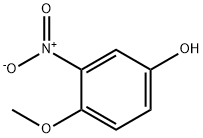
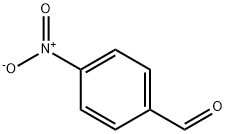






You may like
-
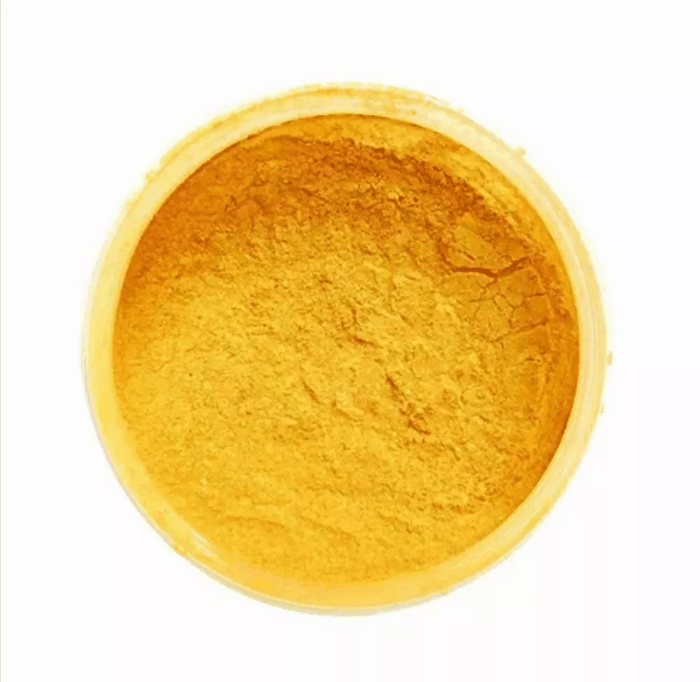 3011-34-5 4-Hydroxy 3-Nitro Benzyldehyde 98%View Details
3011-34-5 4-Hydroxy 3-Nitro Benzyldehyde 98%View Details
3011-34-5 -
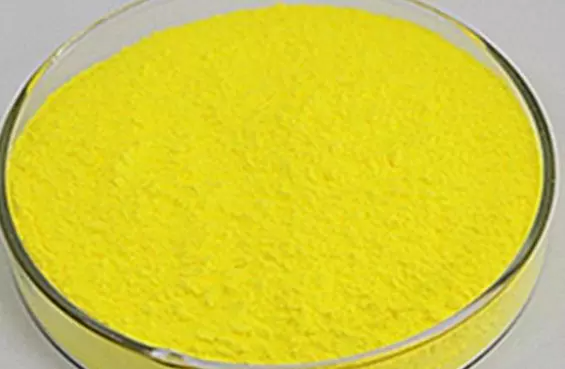 4-Hydroxy-3-nitro-benzaldehyde 98%View Details
4-Hydroxy-3-nitro-benzaldehyde 98%View Details -
 4-Hydroxy-3-nitrobenzaldehyde, 97% CAS 3011-34-5View Details
4-Hydroxy-3-nitrobenzaldehyde, 97% CAS 3011-34-5View Details
3011-34-5 -
 4-Hydroxy-3-nitrobenzaldehyde 98%View Details
4-Hydroxy-3-nitrobenzaldehyde 98%View Details
3011-34-5 -
 3011-34-5 98%View Details
3011-34-5 98%View Details
3011-34-5 -
 4-Hydroxy-3-nitrobenzaldehyde CAS 3011-34-5View Details
4-Hydroxy-3-nitrobenzaldehyde CAS 3011-34-5View Details
3011-34-5 -
 4-Hydroxy-3-nitrobenzaldehyde, 97% CAS 3011-34-5View Details
4-Hydroxy-3-nitrobenzaldehyde, 97% CAS 3011-34-5View Details
3011-34-5 -
 4-Hydroxy-3-nitrobenzaldehyde CAS 3011-34-5View Details
4-Hydroxy-3-nitrobenzaldehyde CAS 3011-34-5View Details
3011-34-5
Statement: All products displayed on this website are only used for non medical purposes such as industrial applications or scientific research, and cannot be used for clinical diagnosis or treatment of humans or animals. They are not medicinal or edible.
